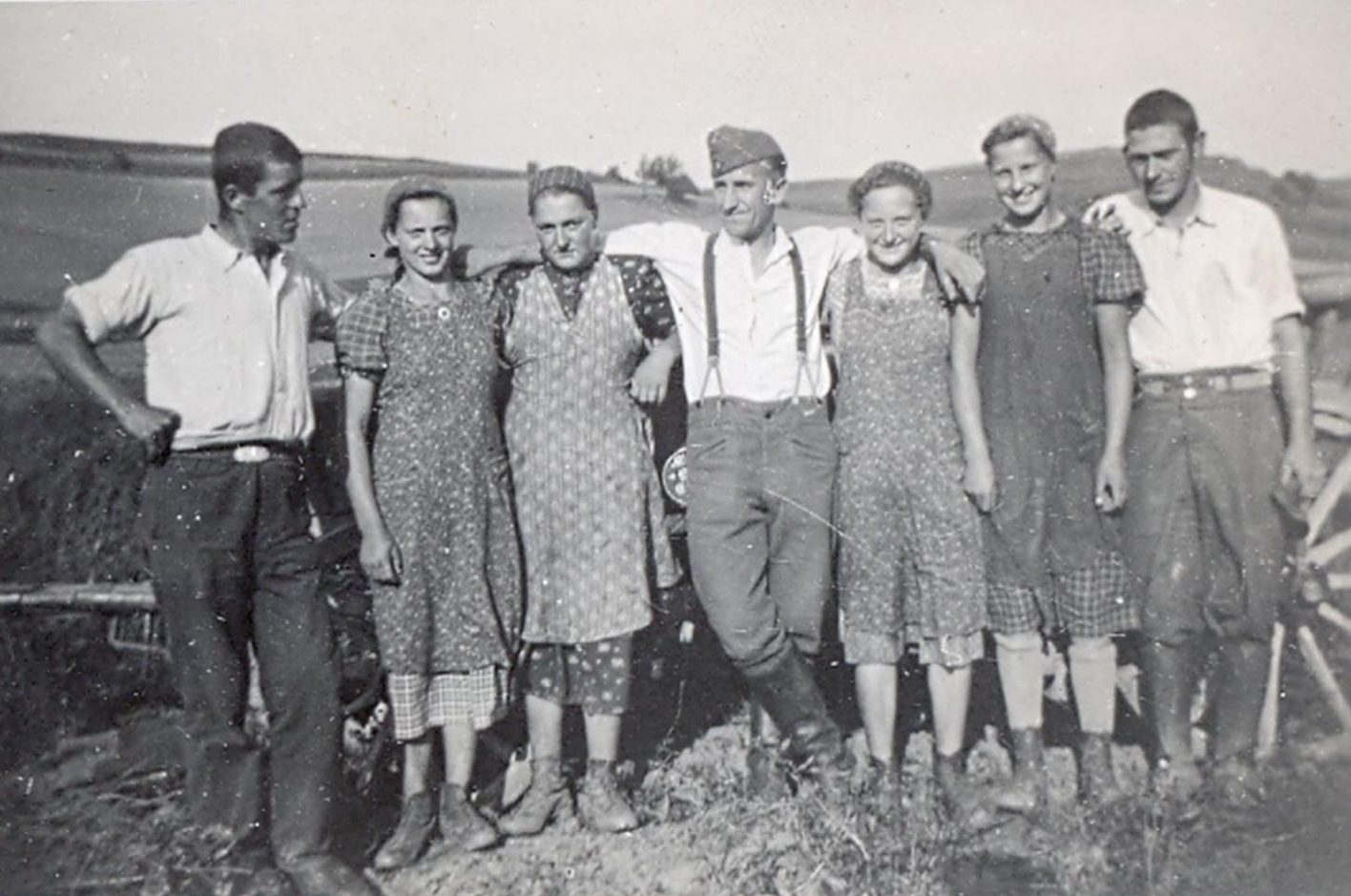
The French prisoners of war Nobile Citerneschi and François Santini worked on the farm belonging to Marie Renner.
Photo: Franz Gabriel / Walter Pakosta ©Wiener Stadt- und Landesarchiv

They were guarded by two Wehrmacht soldiers. Because the soldiers were needed at the front, later the farmers had to guard the forced laborers.
Photo: Franz Gabriel ©Wiener Stadt- und Landesarchiv

The guards Walter Pakosta and Franz Gabriel were supposed to prevent close contact between Austrian workers and French prisoners of war.
Photo: Franz Gabriel / Walter Pakosta ©Wiener Stadt- und Landesarchiv

However, photographs the guards took raised suspicion of a relationship between Marie Renner und Nobile Citerneschi.
Photo: Franz Gabriel / Walter Pakosta ©Wiener Stadt- und Landesarchiv
Strict racial hierarchies characterized the deployment of forced laborers in the German Reich. In accordance with the Nazi ideology, German society viewed the presence of "inferior" workers as a threat to the "racial purity" of the German people. For this reason, the Gestapo and the Labor Administration issued strict regulations pertaining to their presence in the country and their behaviour.
Also minor "offences"—like giving someone a slice of bread with butter or cigarettes or simply talking—were prosecuted by the authorities as "forbidden contact." In such cases, denunciations by the general populace played an important role. Forced Laborers were subject to particularly harsh punishments. For men from Eastern Europe "forbidden contact" bore the threat of the death penalty. German women were often sent to jail or concentration camps.

After a report was made to the police, the Atzenbrugg (Lower Austria) police investigated the Marie Renner case. After a two-month investigation, they concluded that Marie Renner’s “guilt” was minimal. ©Wiener Stadt- und Landesarchiv
After a report was made to the police, the Atzenbrugg (Lower Austria) police investigated the Marie Renner case. After a two-month investigation, they concluded that Marie Renner’s “guilt” was minimal. ©Wiener Stadt- und Landesarchiv
One example demonstrates the paranoia of the surveilling authorities: One German farm worker, a Wehrmacht soldier, and French prisoners of war all in a single photograph—this fanned the suspicions of the Nazi authorities–especially since Nobile Citerneschi, one of the shown Frenchmen, had received the photograph from Marie Renner, his previous German employer. Citerneschi faced a war tribunal due to the suspicion of having had sexual contact with Marie Renner. This same accusation led to Marie Renner being tried before a special tribunal. After a two-month investigation, Marie Renner's "guilt" was considered negligible. There is no record of the judgement handed down for Nobile Citerneschi.

The subjects in the photographs were listed individually for the proceedings against Marie Renner. A total of six photos were seized from Nobile Citerneschi. There is no record of the verdict against him before a military tribunal. ©Wiener Stadt- und Landesarchiv.
The subjects in the photographs were listed individually for the proceedings against Marie Renner. A total of six photos were seized from Nobile Citerneschi. There is no record of the verdict against him before a military tribunal. ©Wiener Stadt- und Landesarchiv.



